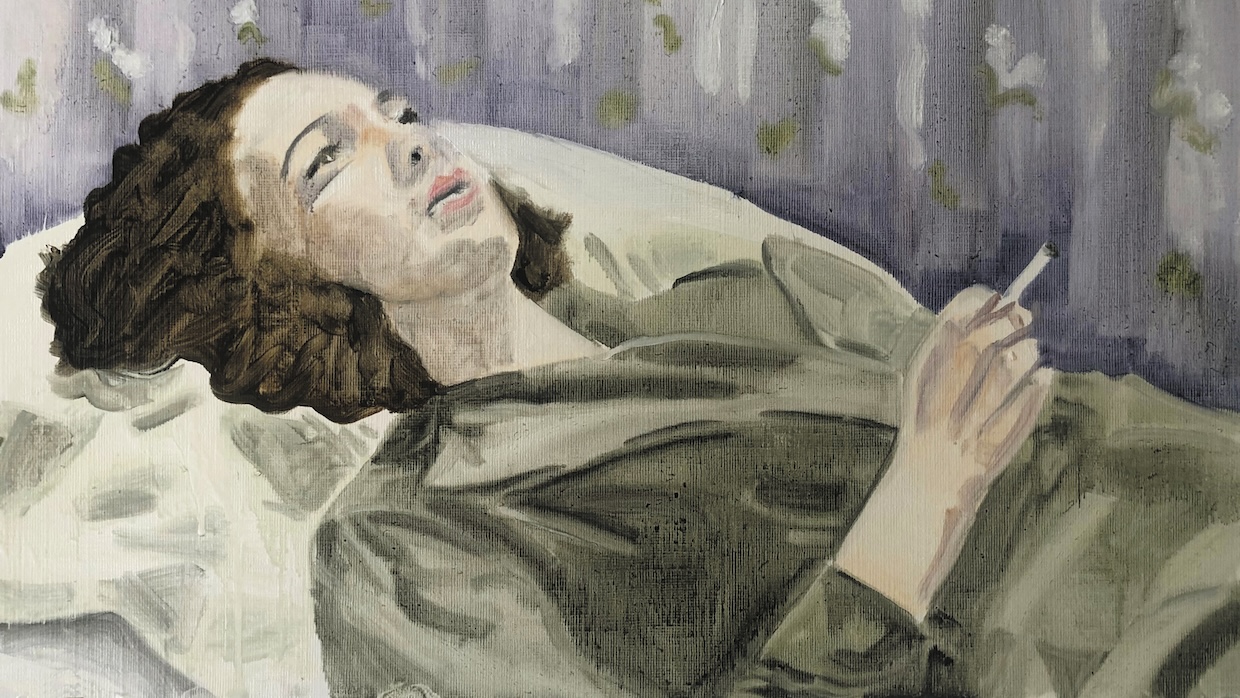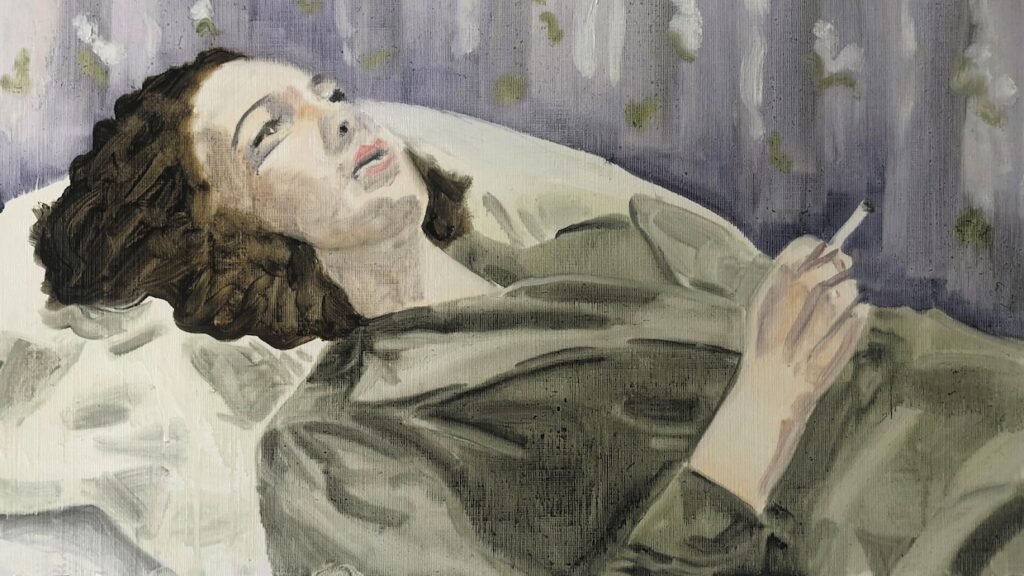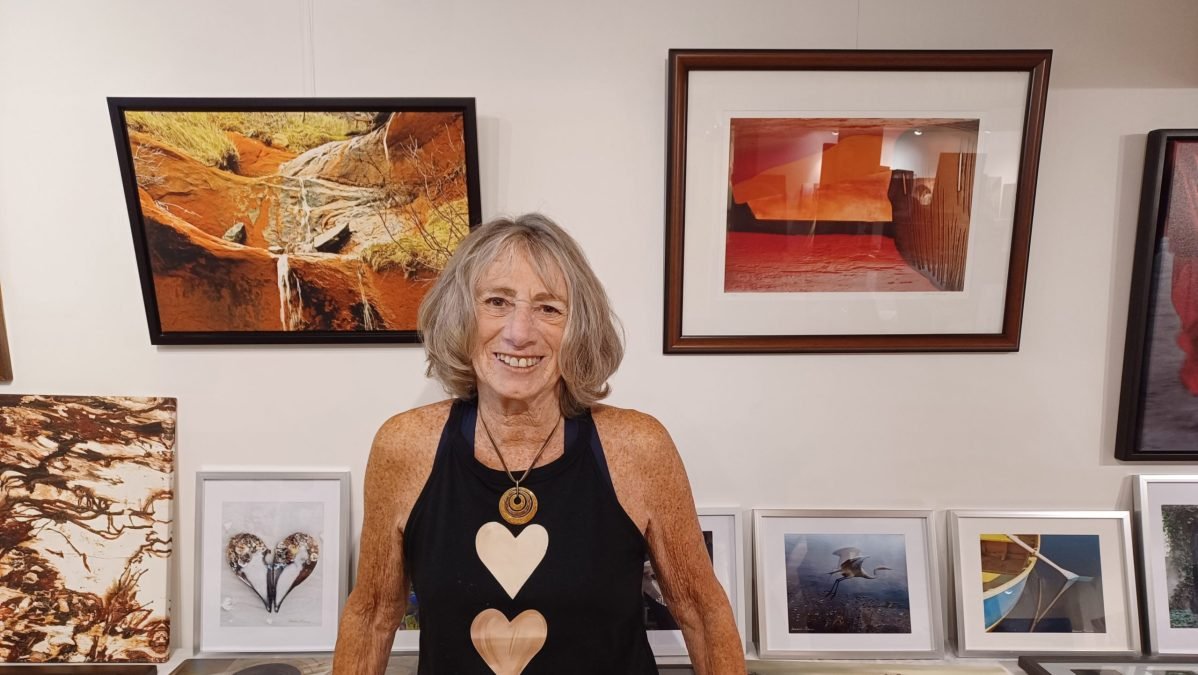
 Isolation Era Film Diary 4: 23.03.20 She was conflicted, 2020, oil on paper, 25.5 x 35.5 cm
Isolation Era Film Diary 4: 23.03.20 She was conflicted, 2020, oil on paper, 25.5 x 35.5 cm Every now and then—winter break, summer break—I purchase a new notebook at the local Blick intending to take up drawing, a practice far from my discipline of cinema studies. This notebook need is not driven by my usual academic hubris, which asks smugly, often with a shrug, “Really, how hard could it be?” but by something more feral and fervent. Like, if I could put pen or pastel to paper, something pure would pour forth, heart to hand to drawing. There would be color and expression and the ineffable, all in a scribble. And if you think I’m exaggerating: There is in my bag right now, I swear, a large book titled—I literally just got up to look—Drawing in the Present Tense. The cover is a scribble, but a scribble that emotes and connotes and makes me feel something big. Ah, to draw…
So, imagine my delight in discovering the drawings and paintings of Cathy Lomax, a London-based artist who has devoted a portion of her practice to what she calls “film diaries,” which are chronicles of her film viewing rendered on paper. Like me, she is a film scholar, having recently earned her PhD from Queen Mary University, where she studied the role of makeup in relation to Hollywood female stars. Makeup! The topic is delicious, and indeed, many of her film diary images come in close to showcase some marvelous mascara, a wild swathe of green eye shadow or taupe lips pursed around a cigarette. She’s also attentive to wardrobe—heels, skirts, bathing suits—as well as the body generally: an arm, a pair of feet, eyes. She’s really good at eyes, especially downcast, demure, defiant, desperate eyes. This is what I love: the distillation of the body, rendered by a body—drawing as a form of film scholarship. But why? Why do I love it?
If you want, I can back up and tell you how it all started.
On a friend’s recommendation, I ordered Claire Dederer’s book, Monsters: A Fan’s Dilemma. When it arrived, I didn’t have time to look at it. A few days went by, and then, finally, on a Saturday morning, I opened the package. A captivating image was on the cover of the UK edition, a painting showing the upper bodies of two women; they are running, screaming, hands up near their faces and ears, as if expressing untenable horror or outrage.
The images feel powerfully familiar: This is what I feel on the daily! But the images are also super weird. AI? I found the cover image credit: Cathy Lomax. I looked her up. Not AI. Not at all. This was drawing, painting and cinema all rolled into one.
And so it began.
I spent the day scouring her website and moving sequentially through all 65 of the Isolation Era Film Diary entries, each featuring a painting or drawing from one of the films she’d viewed. I moved on to the 70 chapters covering 2010 to the present, clicking frame by frame through every collection, each image a resemblance, an echo, a stutter in relation to some original cinematic moment from the past. Some I knew instantly—that’s Enid from Ghost World and Fanny Brawne from Bright Star and poor Mildred Pierce with that bastard of a husband!—while others appealed because of their attention to detail, the often subtle qualities of a fabricated femininity that is profoundly cinematic. Cathy (if I may?) so deftly captures the thrust of a hip, the twist of an ankle, the crook of an elbow with a quick sweep of color. It’s almost uncanny, the ease of rendering.
I also love her titles. If there’s any question regarding the artist’s awareness of what she is so seemingly effortlessly capturing, it’s answered by captions that announce the fate of the female in these scenarios. Some are very direct and prosaic:
– She was on the phone
– She was conflicted
– She liked to float
Some offer more of the story:
– They danced so hard she had to take her shoes off
– They were meeting to go to the hotel
– He was seducing her
And some remind us of the overlap between world and movie:
– Katherine in stripes
– Anne Heche is showering, soon she will be murdered
One more thing: Cathy works in frames, creating elaborate image sequences that in turn feature complex numbering systems tied to dates of creation. She often presents the work in grids, cheerfully moving from portraits to landscapes to close-ups on a detail, and the result is, again, snippets that render wholeness. The frames and grids are eminently cinematic, the whole captured only through the sum of some parts, and just glancing at one of these grids will tell you that Cathy loves cinema. I think this is part of what I, in turn, love: This rendering of the photographic in the drawn and painted returns us to cinema, but cinema reimagined through someone else’s pure affection and understanding.
So, maybe that’s it?
In Cathy’s drawings and paintings, we see cinema and its voracious gaze at the female rendered through the loving gaze of another female. The result is not a doubling of a kind of looking that takes away, but a revisioning of looking that gives back. This is looking that actually sees, that acknowledges, celebrates and reclaims.
Feminist art practice boasts a long history of appropriating images from male artists and re-rendering them with the explicit intention to query power and authority. I’m thinking of Elaine Sturtevant’s meticulous revisions of work by her male peers—Warhol, Lichtenstein, Johns—or, more recently, Justine Kurland’s ravaging of photography books presenting images of the female body made by men, repurposed and collaged in new configurations.
Cathy Lomax belongs to that tradition, for sure, but her borrowing is not an intellectual inquiry or a vengeful assault. It’s a practice, instead, that feels for the ways in which female experience is so often a doubling and a performance, a shimmering between the real and feigned. She draws and paints inside that zone of vibration and variation, through repetition and difference, memory and recognition.
“He had broken in to look at her,” Cathy Lomax writes in pencil as a caption for one of her paintings. In it, we see him looking at her through Cathy looking at her. We see her arched black eyebrows, her smoky eye shadow, that thick mascara. We look at those closed eyes, and Cathy lets us hover there, in the space where the image stutters through the frame rendering—yeah, you know it—the ineffable.






